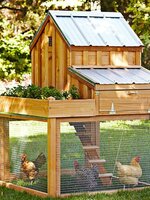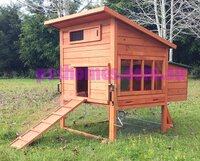Scareab
Songster
Hello!
I’m now in the process of ordering or making a coop. I’m only going to have 2-3 chickens and all of them will be free range. (We have a large field in the back that has plenty of bug yummies for them) So we want a safe coop in the backyard for them to sleep well and protected.
The things on our list for ideal coops are:
- a drop floor
- two-three nesting boxes
- a run
- a place to put food and water so they access it for 24/7
If I’m missing anything please let me know or something I should look out for.
I have two structures which seem ideal but Im open to changes and more info on chicken care. I just want whats best for my chickens!
I’m now in the process of ordering or making a coop. I’m only going to have 2-3 chickens and all of them will be free range. (We have a large field in the back that has plenty of bug yummies for them) So we want a safe coop in the backyard for them to sleep well and protected.
The things on our list for ideal coops are:
- a drop floor
- two-three nesting boxes
- a run
- a place to put food and water so they access it for 24/7
If I’m missing anything please let me know or something I should look out for.
I have two structures which seem ideal but Im open to changes and more info on chicken care. I just want whats best for my chickens!








